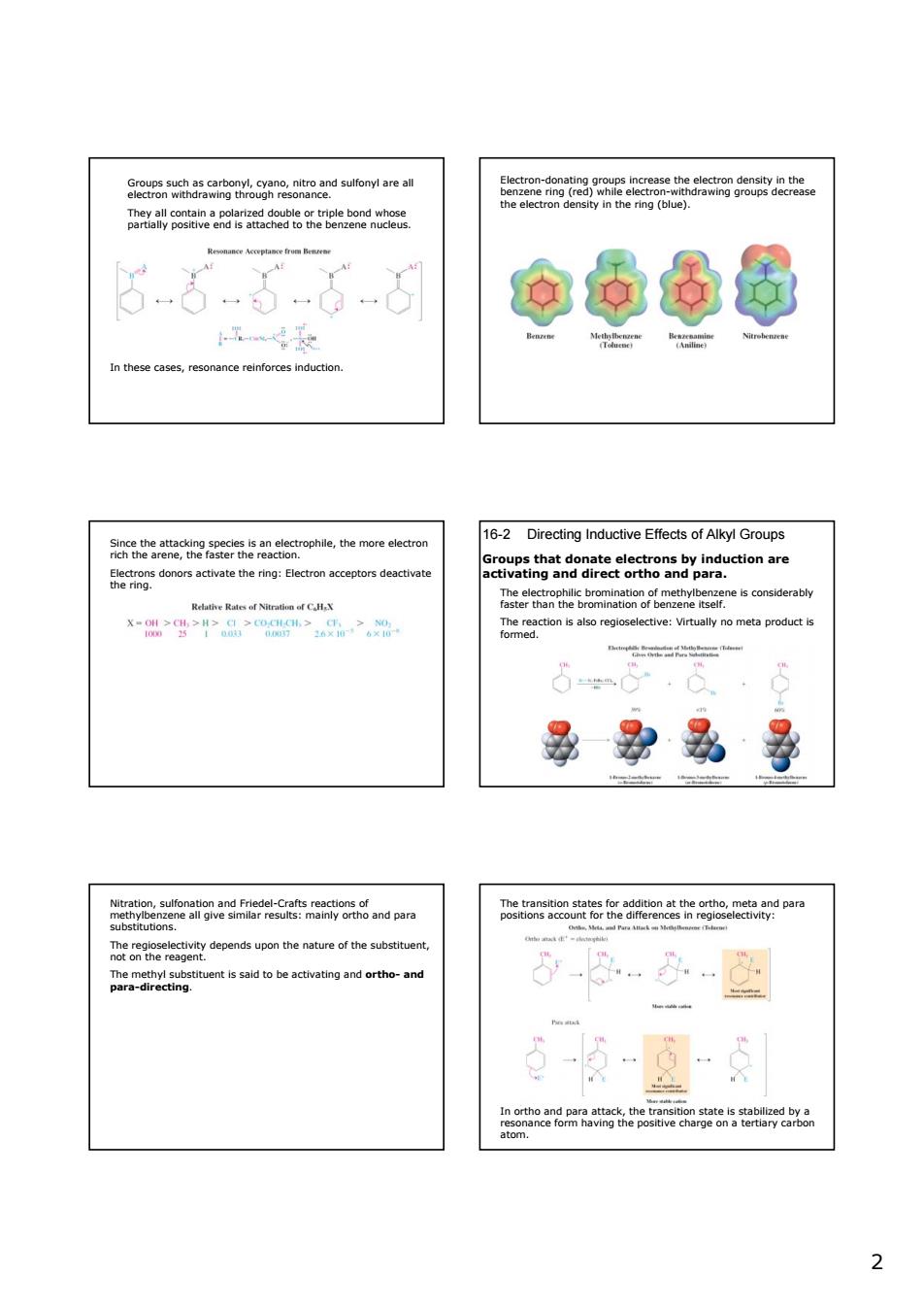正在加载图片...

Se5uhaargaSg9anncdsuibatana 。 healoeaanaPas7gdoe的lsrrgeeaednte 5-66-6-d @66通 Sitgahch2eanaeophle,themoreeecton 16-2 Directing Inductive Effects of Alkyl Groups aeRhemn6nrmehetenesconsiderab 最业易最 egg2g3S2namn aemn mdepends pon the nature of the Paeadrgiuessadobesctvathrgandorho-and 5-8-8图 5-5-@- w2 Groups such as carbonyl, cyano, nitro and sulfonyl are all electron withdrawing through resonance. They all contain a polarized double or triple bond whose partially positive end is attached to the benzene nucleus. In these cases, resonance reinforces induction. Electron-donating groups increase the electron density in the benzene ring (red) while electron-withdrawing groups decrease the electron density in the ring (blue). Since the attacking species is an electrophile, the more electron rich the arene, the faster the reaction. Electrons donors activate the ring: Electron acceptors deactivate the ring. 16-2 Directing Inductive Effects of Alkyl Groups Groups that donate electrons by induction are activating and direct ortho and para. The electrophilic bromination of methylbenzene is considerably faster than the bromination of benzene itself. The reaction is also regioselective: Virtually no meta product is formed. Nitration, sulfonation and Friedel-Crafts reactions of methylbenzene all give similar results: mainly ortho and para substitutions. The regioselectivity depends upon the nature of the substituent, not on the reagent. The methyl substituent is said to be activating and ortho- and para-directing. The transition states for addition at the ortho, meta and para positions account for the differences in regioselectivity: In ortho and para attack, the transition state is stabilized by a resonance form having the positive charge on a tertiary carbon atom